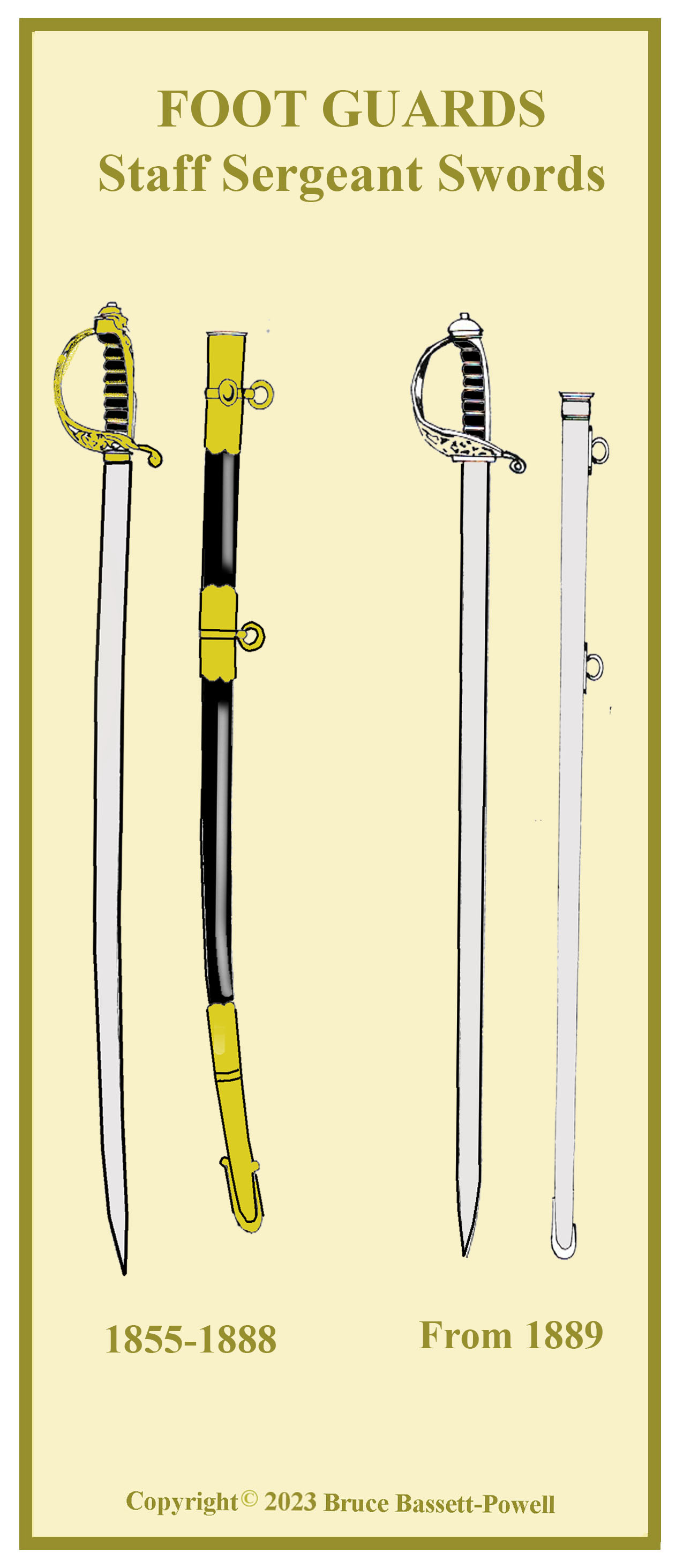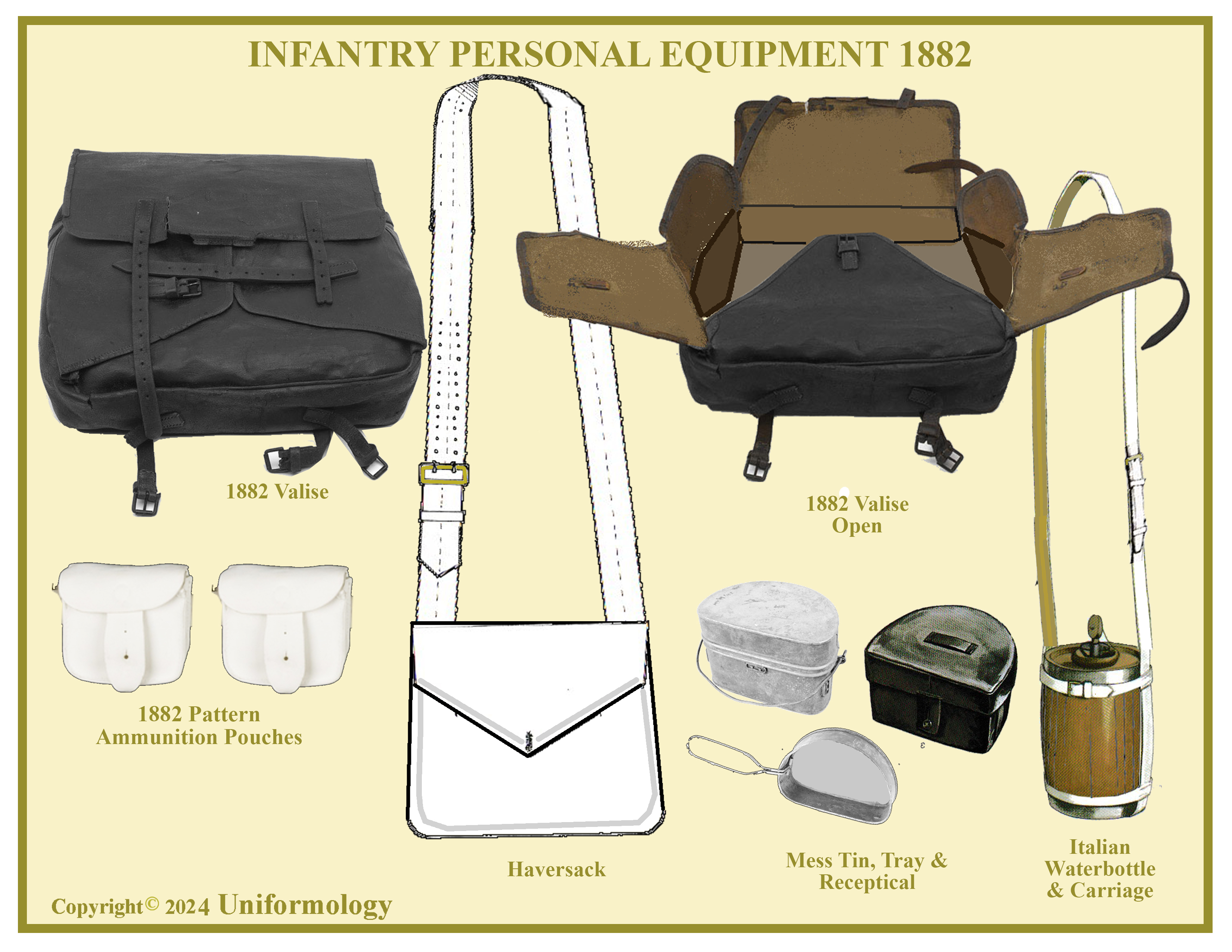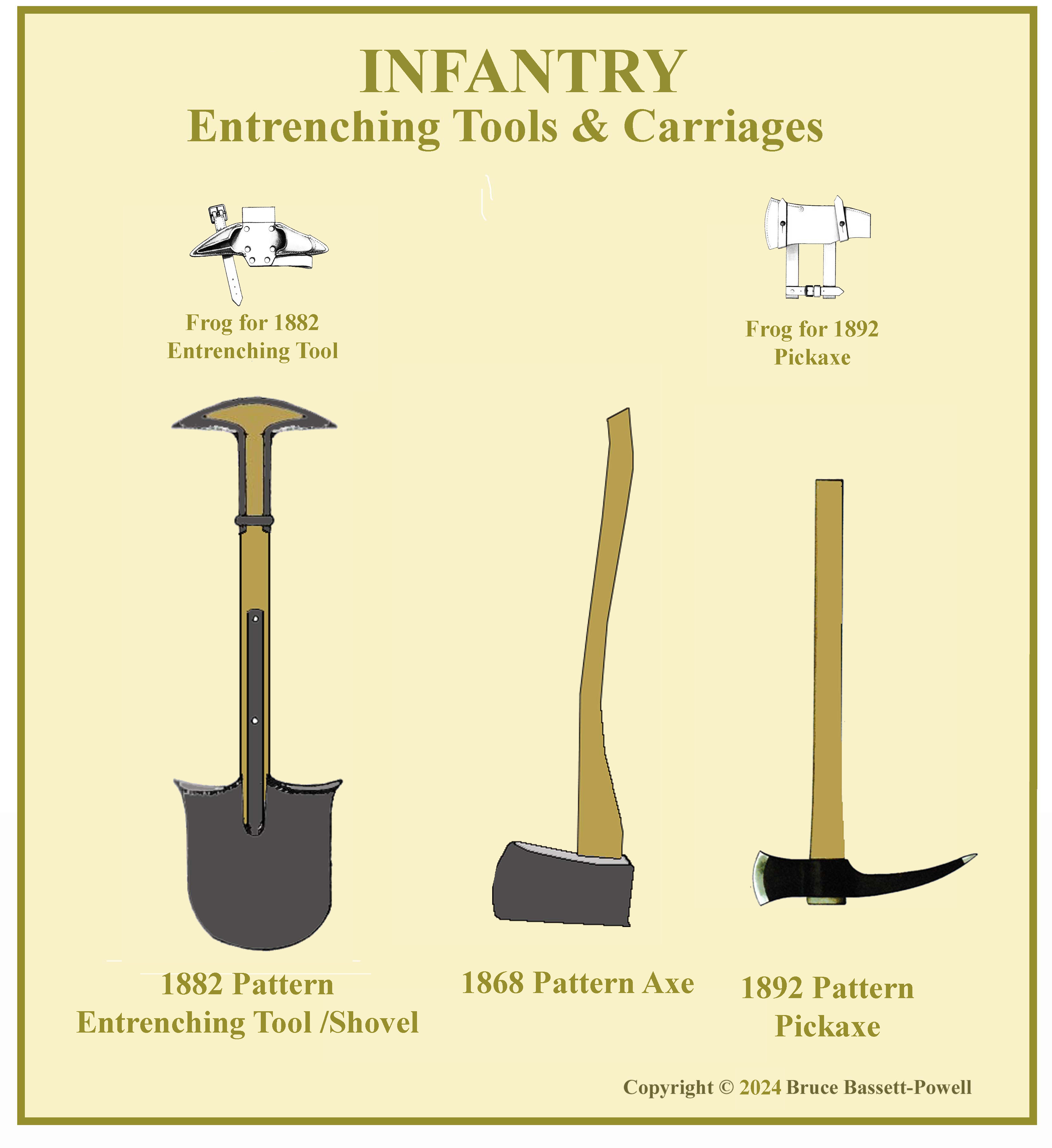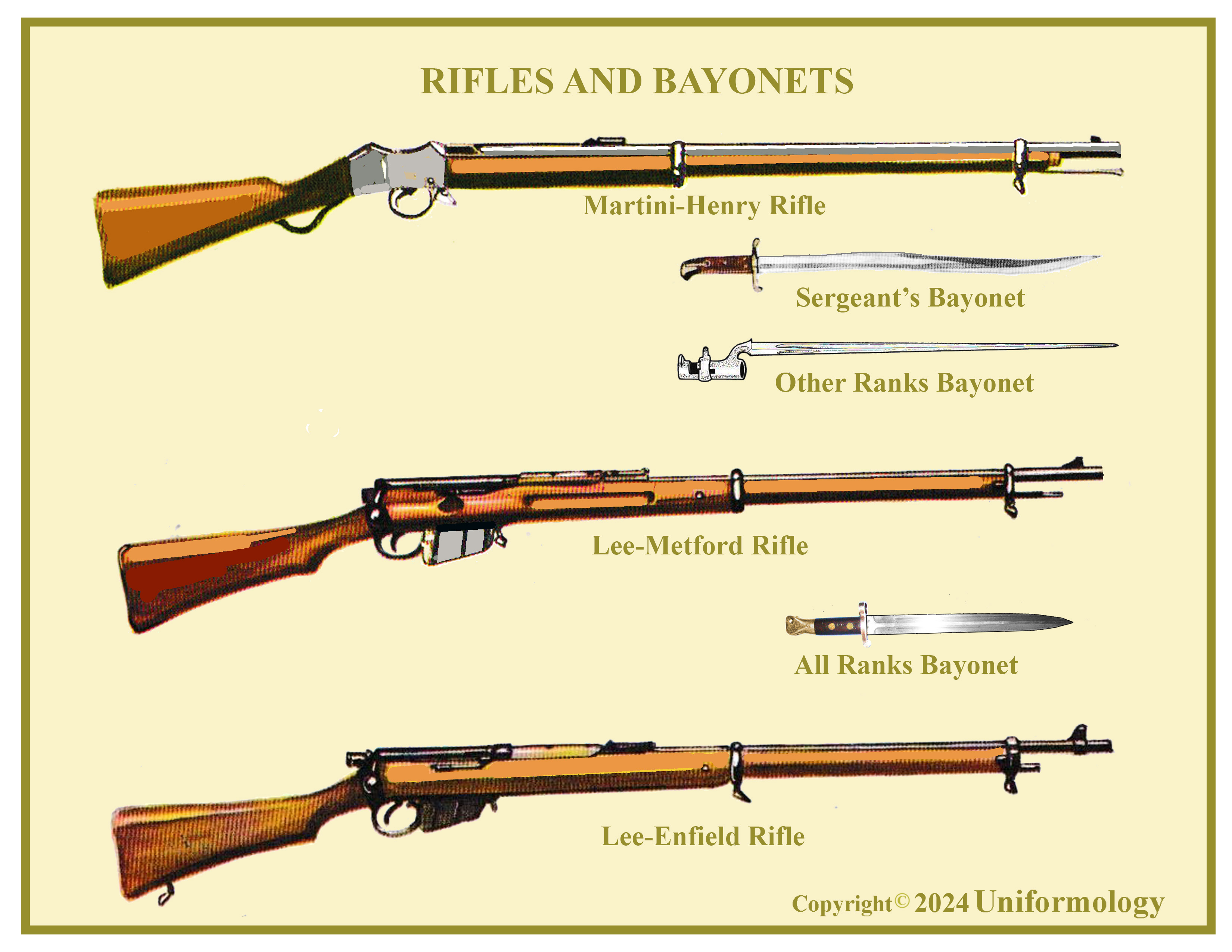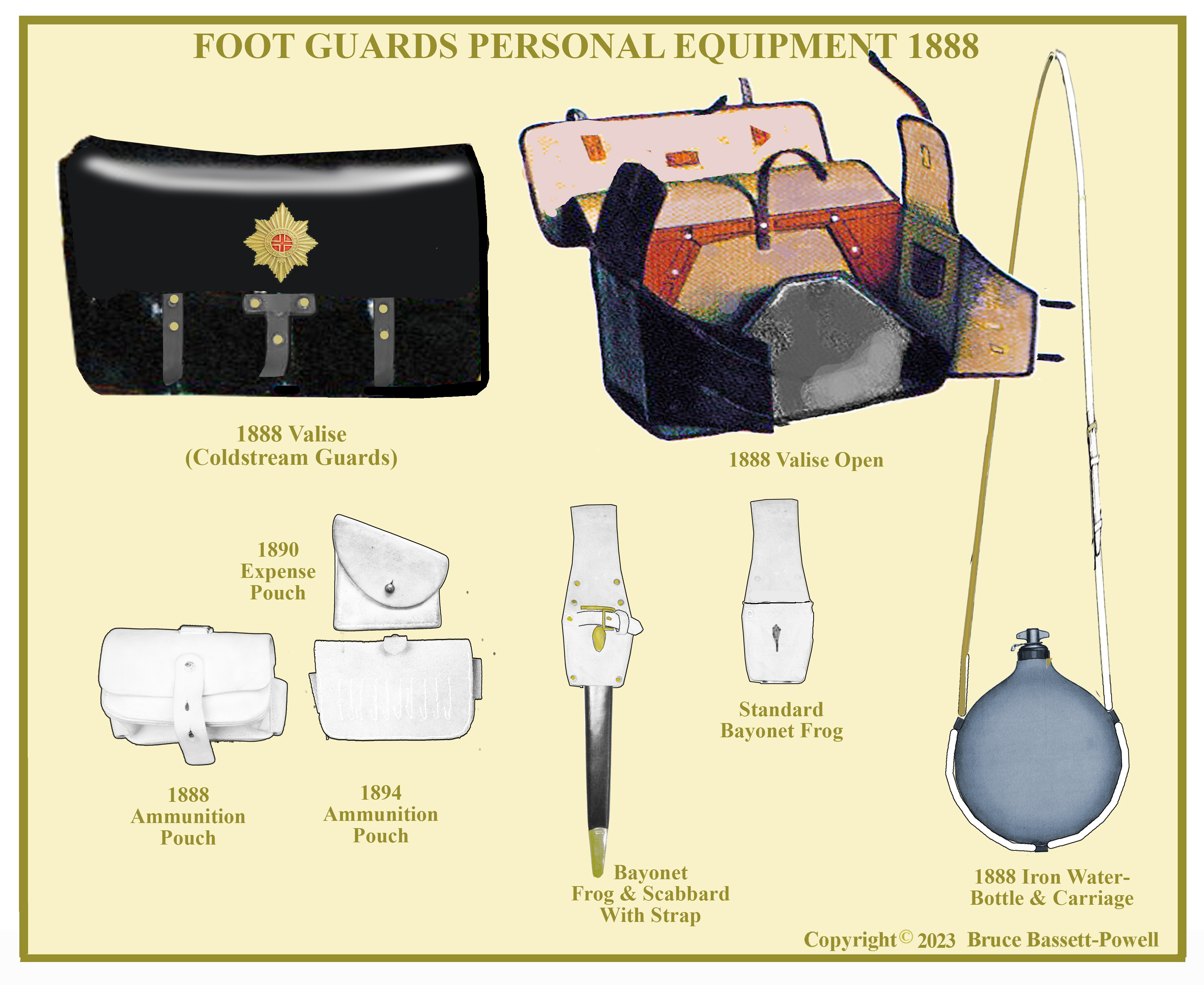WEAPONS, PERSONAL & ENTRENCHING EQUIPMENT
UNIFORMS, ARMS & EQUIPMENTS
Warrant Officers and Staff Sergeants carried swords on duty and on parade. This 1822 pattern sword had a 32 1/2 inch blade with a slight curve toward the end. The guard was gilt and the hilt had a black fish skin grip bound with silver wire. The scabbard was black with gilt mounts. In 1889 a new sword was introduced. This had a standard 32 3/4 inch steel blade with a steel scabbard that had steel rings.
RIFLES & BAYONETS
In 1881 the British infantry still carried the Martini-Henry Rifle, first issued in 1871. It had a 0.45 Inch calibre. This single shot weapon fired a .480 lead slug from a Boxer cartridge Inserted into the breech, which opened by depressing the lever behind the trigger guard. Other ranks had a triangular socket bayonet while sergeants had a sword bayonet with a "wavy" blade. The Rifle weighed 8 lb 10 ounces and had a "wicked" kick when fired. It also rapidly overheated during sustained firing.
As a result of a report by the Small Arms Committee in 1887, the first magazine rifle was introduced into the British Army. This bolt action rifle was the first to use the .303 cartridge. It weighed just over 9 lbs and had a magazine holding 8 rounds. It used black powder propellant and had a standard sword bayonet with a 12 inch blade issued too all ranks.
With the introduction of cordite, the black powder propellant became obsolete. Also abolished was the lead bullet which was replaced by one with a cupro-nickel jacket. By 1895, these improvements produced the first Lee-Enfield Rifle in 1895 which was 4ft 1 1/2 inches long and weighed 9 lbs 4 ounces. With few modifications, the Lee-Enfield was to sustain the British Soldier through two world wars.
The 1871 valise equipment was relaced in 1882 with a new set. We have seen how it was distributed about the body in the previous section. The valise was 15 inches wide and 11 1/2 inches deep. The flap at the top was secured by two straps & buckles and the lower and side flaps were similar. The valise opened easily for soldiers to place their personal items such as spare trousers, shirts and washbag. The whole was attached to the braces in front in a somewhat complicated manner.
There were two ammunition pouches which slid onto the belt with a loop on the back of each pouch. Each pouch contained 20 rounds with a further 30 rounds in a bag placed in the haversack. The white canvas haversack was 12 inches wide and 9 inches deep. It generally contained the days rations. The 8 inch flap was secured by a brass stud or button. It was put on before all of the other equipment. When empty, it was rolled up and allowed to go over the bayonet scabbard. The adjustable canvas strap had a brass buckle.
The waterbottle was the 1874 pattern "Italian" bottle. Made of wood, it had iron bindings top and bottom with a screw top.
The Mess tin consisted of a semi-circular metal tin in three parts. The base, a tray and a lid which was placed into a black japanned receptacle that was secured above the valise with a white strap.
Note: The following section describes weapons & equipment
that applied to ALL Infantry. Not only Foot Guards
Two officers (Colonel Slade & Lt. Col Wallace) designed a valise set which was offered to the War Office in the mid 1880s. This was approved and introduced in 1888. Known as the Slade-Wallace equipment, it was issued to the infantry generally by 1890. The only items carried over from the 1882 equipment was the haversack and mess tin. The valise, constructed of black japanned canvas was now placed at the top of the back just below the collar line. The rolled greatcoat was attached to the rear of the waistbelt. The Mess tin, in its receptacle was placed above that. The water bottle was a circular container made of iron and slung by an adjustable strap over the left shoulder. The Pouches, designed to keep the ammunition (Now 50 rounds per pouch) from falling out when in the prone position, had slots within the pouch to keep them secure. In 1891, an expense pouch was issued carrying a full magazine.
NEXT
Uniforms of the Corps of Drums and Bands
All four Guards regiments (along with all other infantry regiments) had a Pioneer company. Their duties were to clear the way on unpaved roads and remove obstacles. In action they were tasked with making and securing trenching positions. While entrenching tools were carried by the rank and file, Pioneers had a more diverse set of tools. The 1882 pattern Entrenching tool was a cumbersome spade that had a short pickaxe and spike built into the wooden handle. An update in 1883 did not endear the tool with the infantryman. It was abolished in 1892.
The Pioneers were much more comfortable with their equipment. A heavy axe and pickaxe were more approved.



